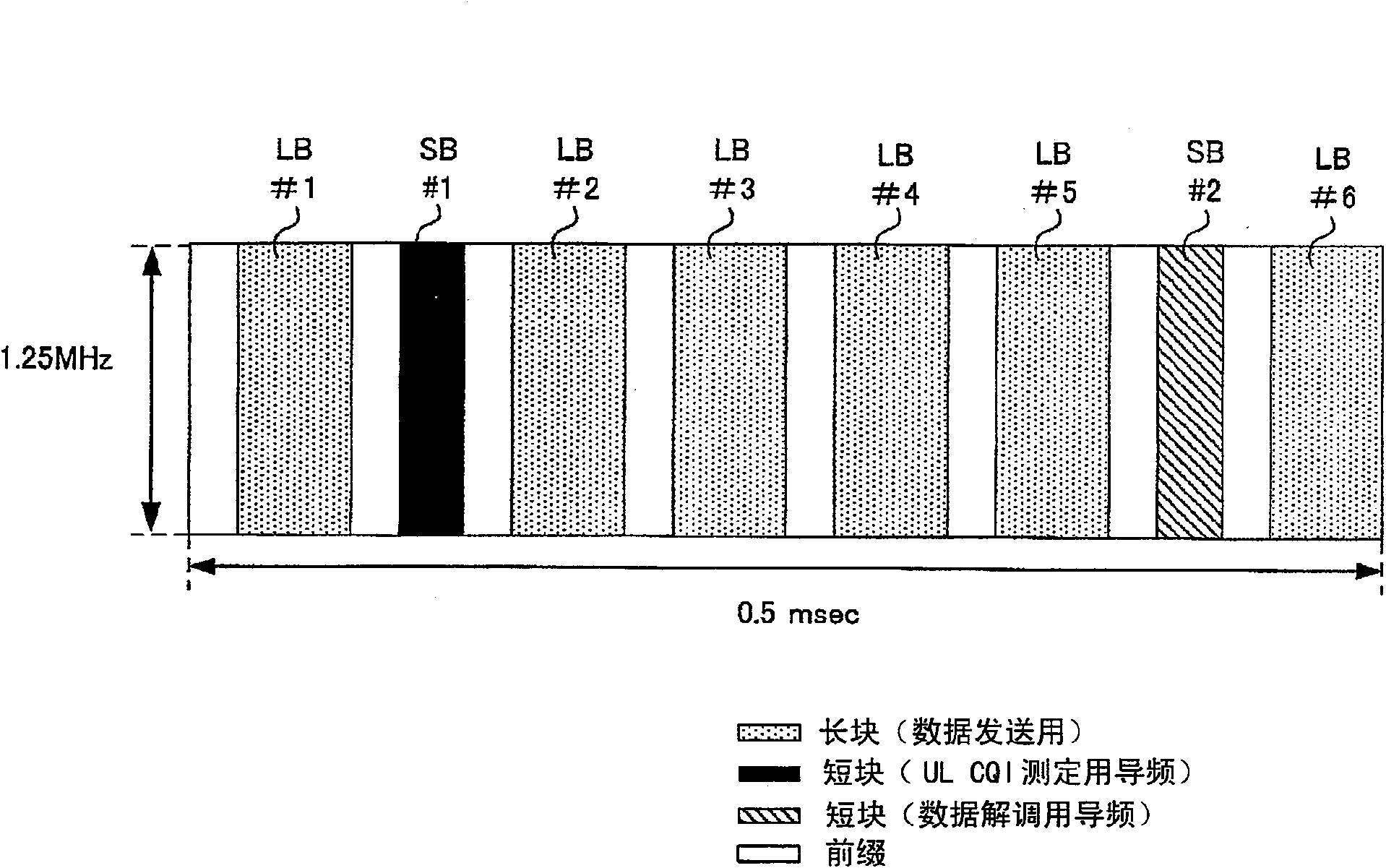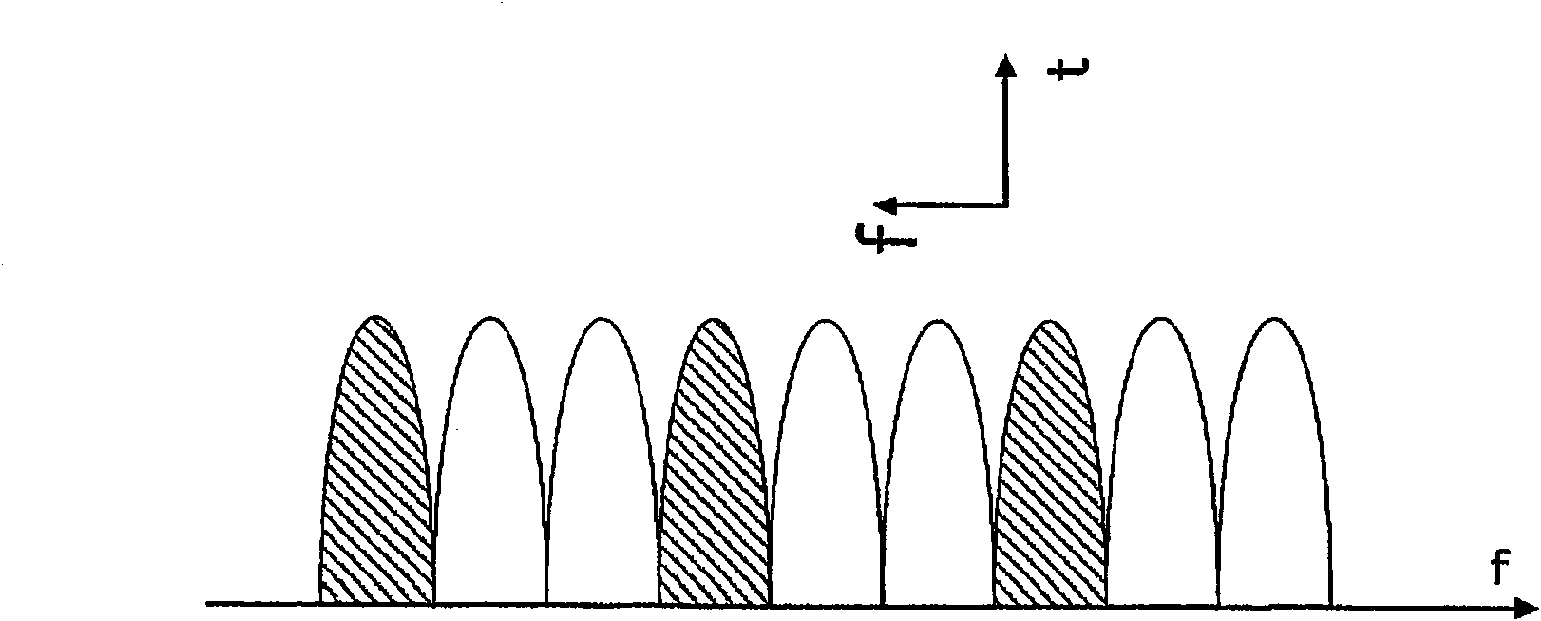Communication terminal device, communication control device, radio communication system, and resource allocation request method
A technology for a wireless communication system and a communication terminal, which is applied in the field of communication terminal devices, can solve the problems of requiring time, unable to effectively utilize UL resources, and effectively utilizing resources with low utilization frequency, and achieves the effect of effectively utilizing resources.
- Summary
- Abstract
- Description
- Claims
- Application Information
AI Technical Summary
Problems solved by technology
Method used
Image
Examples
no. 1 Embodiment approach
[0117] In the first embodiment, taking a mobile station in DTX / DRX mode as an example, using Figure 7 Describe in detail. In this embodiment, a mode in which transmission of a pilot signal is stopped and a resource request (UL RR) is performed will be described. Figure 7 It is a sequence diagram showing an example of a pilot signal variation accompanying a UL resource request in the first embodiment. Figure 7 A sequence diagram of a mobile station (UE) is shown on the left side of , and a sequence diagram of a base station (NB) is shown on the right side. exist Figure 7 In , long blocks for data transmission are indicated by dots, short blocks of pilots for UL CQI measurement are indicated by blacked-out areas, and short blocks of pilots for data demodulation are indicated by oblique lines, which are used in the following embodiments. The same is true for the same figure. Below, use Figure 6 , Figure 7 The operation of the UL RR will be described.
[0118] Such as...
no. 2 Embodiment approach
[0134] Next, as a second embodiment, taking a mobile station in DTX / DRX mode as an example, using Figure 9 Describe in detail. In this embodiment, a mode in which a resource request (UL RR) is performed by stopping transmission of a pilot signal and restarting it within a predetermined period will be described. Figure 9 It is a sequence diagram showing an example of a pilot signal variation accompanying a UL resource request in the second embodiment. Figure 9 A sequence diagram of a mobile station (UE) is shown on the left side of , and a sequence diagram of a base station (NB) is shown on the right side. Below, use Figure 6 , Figure 9 The operation of the UL RR will be described.
[0135] Such as Figure 9 As shown, assume the following situation ( Figure 9 pilot signal transmission): the mobile station 200 in the DTX / DRX mode does not always communicate, but in order to maintain synchronization, at a certain time frequency position, within the period during which...
no. 3 Embodiment approach
[0152] Next, as a third embodiment, taking a mobile station in DTX / DRX mode as an example, using Figure 11 Describe in detail. In this embodiment, a mode in which transmission of a pilot signal is stopped and a resource request (ULRR) is performed when the transmission frequency band of the pilot signal is changed with time will be described. Figure 11 This is a sequence diagram showing an example of a pilot signal variation accompanying a UL resource request in the third embodiment. Figure 11 A sequence diagram of a mobile station (UE) is shown on the left side of , and a sequence diagram of a base station (NB) is shown on the right side. Below, use Figure 6 , Figure 11 The operation of the ULRR will be described.
[0153] Such as Figure 11 As shown, assume the following situation ( Figure 11 Pilot signal transmission): The mobile station 200 in the DTX / DRX mode does not always communicate, but in order to at least maintain synchronization, the time frequency pos...
PUM
 Login to View More
Login to View More Abstract
Description
Claims
Application Information
 Login to View More
Login to View More - Generate Ideas
- Intellectual Property
- Life Sciences
- Materials
- Tech Scout
- Unparalleled Data Quality
- Higher Quality Content
- 60% Fewer Hallucinations
Browse by: Latest US Patents, China's latest patents, Technical Efficacy Thesaurus, Application Domain, Technology Topic, Popular Technical Reports.
© 2025 PatSnap. All rights reserved.Legal|Privacy policy|Modern Slavery Act Transparency Statement|Sitemap|About US| Contact US: help@patsnap.com



